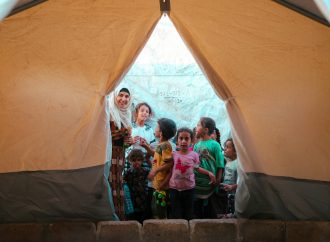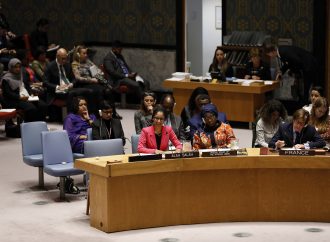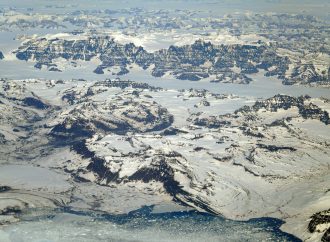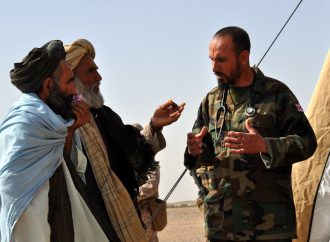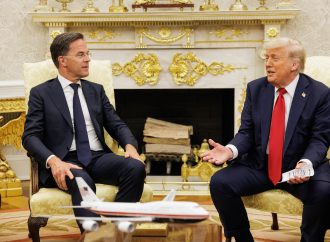As part of the Canada 2020 conference, Hillary Clinton will be giving a lunch-time talk at the Ottawa Convention Center on October 6. The subject of her speech is yet to be announced, but I imagine due attention to “Canada-U.S. relations in a changing world” will be given. I also imagine the event will be sold out despite high ticket prices because the former U.S. Secretary of State—former front-runner for the 2008 Democratic presidential nomination, former U.S. Senator and former First Lady—is also by far the most likely person to succeed Barack Obama in the White House (according to the American and British bookmakers at least).
By my count, this will be her fourth visit to the national capital region, and the first since 2010, when she came to attend important meetings in Wakefield. But where exactly is Ottawa in Clinton’s world?
Ottawa, predictably, never shows up in Hard Choices, and even Canada gets drive-by mentions only.
To answer this question, I turned to Hard Choices, her second memoir published earlier this year, and I read it through the lens of Saul Steinberg’s 1976 New Yorker cover, “View of the World from Ninth Avenue,” a famous Manhattanite mappa mundi from the era when Jimmy Carter was making an unexpected splash in the Democratic presidential primaries. (This venerable mapping method has now become a popular art form, and a way of satirizing the mental geographies of U.S. statesmen and stateswomen.)
The first thing I learned is that Steinberg and Clinton both gaze west, towards Asia. Their vantage points, however, are slightly different. For the former Secretary of State, the center of the universe is not New York City’s Ninth, but that important stretch of downtown Washington between Third and Twenty-Third. Also different is the depth: Steinberg delineates his map on the far end by three hills rising out of the Pacific Ocean, identified as China, Japan, and Russia. In the map distilled from Hard Choices, by contrast, the farthest edges are deeper in the Old World, in Benghazi and Syria, both of which receive chapter-length treatment.
The satire of Steinberg’s map comes from its preposterous proportions. ‘Jersey’ towers over the rest of the U.S., which is marked with nothing but a few rocks and the small-font names of a handful of cities and states; the rest of the world gets but one third of the canvas. Hard Choices is hardly different. While it details Clinton’s 112 state visits and countless summits in places like Davos and Los Cabos, the book still manages to deliver two American stories for every foreign one. No wonder it is being greeted as a 2016 election manifesto of sorts.
Canada’s Sharpest International Affairs Commentary
Don’t miss future posts on the CIPS Blog. Subscribe to our email newsletter.
To identify the largest foreign landmasses on Clinton’s map, I thumbed through the book’s voluminous index. The top five foreign toponyms, rank-ordered by simple page counts, are Israel/Palestine, Afghanistan/Pakistan, China, Iran, and Russia. All of these have a ‘here be dragons’ quality, a phrase medieval map makers used to mark treacherous territories. Palestinians are “denied the dignity and self-determination that Americans take for granted”; Islamabad is only a “nominal ally in the fight against terrorism”; China is “the epicenter of the antidemocratic movement in Asia” (a line that led Beijing to ban distribution of the book), a nuclear-armed Iran is neither “acceptable” nor “containable” (like the Soviet Union once was); and Russia is led by a “disciplined and fit…authoritarian [who] sees geopolitics as a zero-sum game.”
Iraq gets fewer mentions than I expected, but it clearly falls in the above category. Crucially, Clinton acknowledges that this outcome is no small part thanks to those who should have known much, much better than to help a thousand new monsters hatch: “I thought I had acted in good faith and made the best decision I could with the information I had. And I wasn’t alone in getting it wrong. But I still got it wrong. Plain and simple.” So the author writes of her 2002 vote as a U.S. senator to authorize the Iraq invasion.
Ottawa, predictably, never shows up in Hard Choices, and even Canada gets drive-by mentions only. Recall that Steinberg’s cartoon represents the continental U.S. as a rectangle boxed in by Mexico to the left and Canada to the right, so that its two neighbours appear equally important. Those were the days.
See also:
- Srdjan Vucetic, Understanding the Great War
- Roland Paris, Obama’s Gamble in Iraq and Syria
In Clinton’s world, Mexico is twice as big as Canada. In fact, there are but four memorable lines about America’s largest trading partner in the entire 635-page tome. One is that talked-about bit detailing the author’s moment of illumination about climate change that occurred in 2005 while she was flying over Yukon’s dying forests. The second is a scenario Clinton presented to an audience of Pakistani students about hypothetical terrorists crossing the border from Canada and taking control of Montana (“Would we accept it because Montana is remote and sparsely populated? Of course not…and neither should Pakistan.”). Third, a Saudi student’s cheeky query on whether Clinton would move to Canada if Sarah Palin ever rose to the U.S. presidency (“No, I said, I would not flee”); and, fourth (brackets in the original): “(Many Americans take our relationship with Canada for granted, but our northern neighbor is an indispensable partner in nearly everything we do around the world.)”.
This last line appears as an afterthought, but it is music to Canadian ears. Kudos to the author (and her ghost writers), and let us hear more about Canada’s indispensability on Monday.





